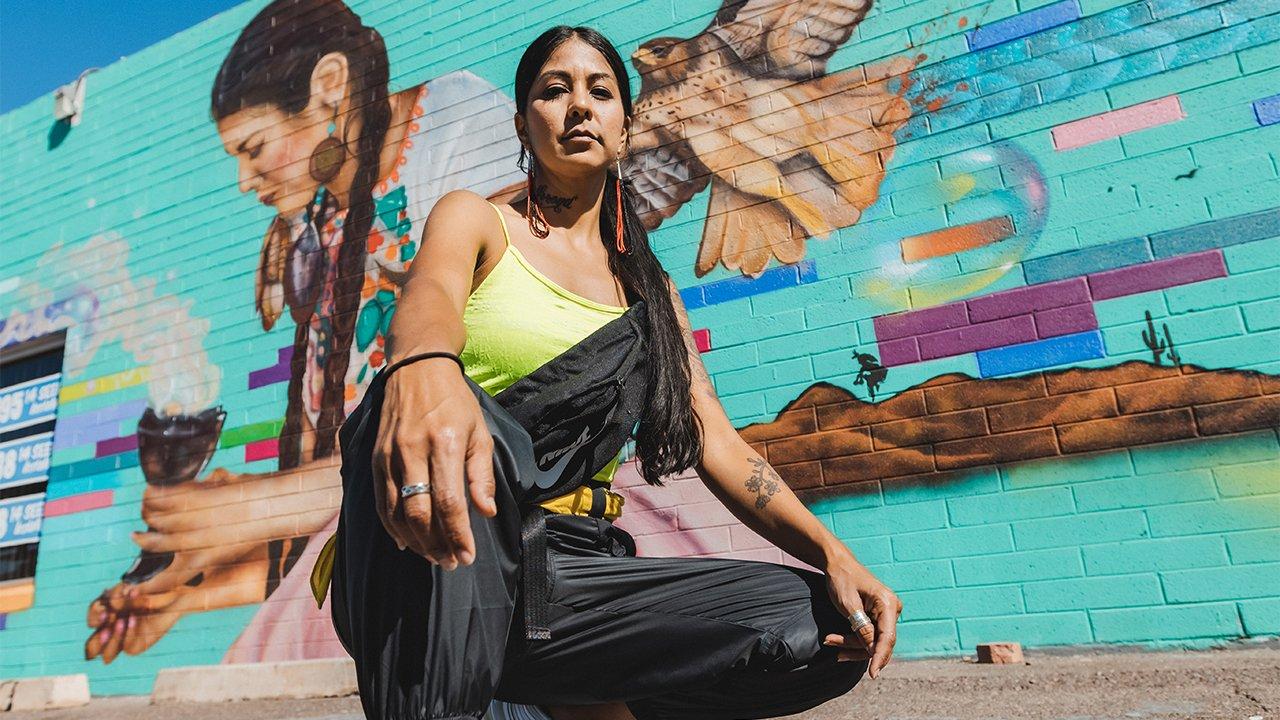
Nov 25, 2025
Hibbett and Nike named two additional high schools to their joint First String philanthropic initiative this month, continuing their commitment to supporting youth athletes during the season of giving.
Read MoreNov 16, 2021
PHOENIX, AZ—Lucinda Yrene Hinojos didn’t set out to be an artist.
As a young adult, her passion was soccer; she played from the age of six til her college graduation, inspired by female athletes like Mia Hamm and Julie Foudy.
Then, it was about resilience: surviving and leaving a 12-year-long domestic violence relationship and fighting through mental health hurdles—all while caring for her three children.
But it was during this difficult part of her life that she found art. While Hinojos had discovered a talent for drawing while in college, she’d never explored it—until her therapist recommended she turned to it as a way to help her heal.

“Art saved me,” Hinojos said. “I didn’t know where to start…I wasn’t doing art, I wasn’t involved in the community, I didn’t know anybody. But in my spirit, I’ve always been a fighter and I’ve always been strong. So I got determined. There was a graffiti show that I went to, and it did something for me. I said, ‘Wow, I want to do this.’”
Hinojos, who is based in Arizona, is of Chicana, Chrikawa Apache, White Mountain Apache and Yaqui descent. She’s now a full-time muralist and painter, known by the handle La Morena. She’s also now nationally recognized, partnering with public artists like Mata Ruda and showing at galleries throughout the U.S. But it all started with underground graffiti shows that cemented her reputation as a voice for the community—and an unrelenting advocate for justice.
In 2015, Hinojos was asked to assist with supplies for a mural in downtown Phoenix that represented a partnership with the Colibrí Center for Human Rights, Net Roots, and Just Seeds. Midway through work on the mural, the project was cancelled: the artists were asked to halt work on the piece, which depicted immigration issues, due to a nearby protest. Hinojos used her community connections to secure a new spot for the piece.

“That project changed my life,” she said. “Because of that moment, it changed my perspective on immigration. When this mural happened, it changed me, it awakened me politically, it spiritually awakened me, and it culturally awakened me.”
In addition to raising awareness of current issues, Hinojos’ work explores her culture, spirituality and community. Native communities are still grappling with the fallout from years of forced assimilation, which is why Hinojos is steadfast in her commitment to lead the younger generation back to their identities in Arizona and worldwide. She says her heritage has shaped not just the subject of her pieces, but the way she paints them; she’s found herself naturally exhibiting native and Chicano styles in her art.
“For so long we’ve been swept under the rug, erasing our identities and our people,” she said.“The work I do breaks barriers down and paves the way for the younger generation to be are presentative for our people.”

For Hinojos, art started as a way to heal. Now she’s turning that lens of introspection and strength onto those around her.
“I feel as though my community is excited and proud because they’re seeing themselves in my work, and they’re being heard in my work,” she said. “When we see a brown woman on the wall, it’s reclaiming our identity and roots. We’re speaking up. ”That’s why Hinojos knows the work she’s doing is bigger than just her.
“My murals are healing, inspiring to communities,” she said. “It’s not just art. My murals are medicine.”
